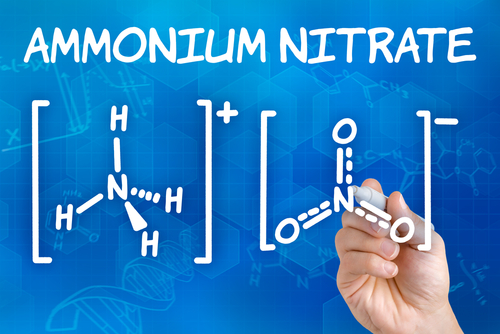 |
What we know about ammonium nitrate is that it is commonly used both for fertilizer in agriculture and for explosives in mining and other industries, and that significant quantities of the chemical are stored throughout the country. What we do not know is exactly how much ammonium nitrate is in storage and where this storage is taking place. How can a substance with so much potential for destruction be off the regulatory radar of several different agencies with jurisdiction? Here’s how.
The Occupational Safety and Health Administration (OSHA) regulates worker exposure to hazardous chemicals in the workplace and since 1992 has regulated certain highly hazardous chemicals through its Process Safety Management (PSM) regulations. Ammonium nitrate, however, is not one of those “certain” chemicals covered by PSM regulations.
The Environmental Protection Agency (EPA) regulates environmental and public health and safety regarding exposure to hazardous chemicals and issued Risk Management Program (RMP) regulations in 1996. RMP regulations require facilities handling certain chemicals to prepare plans addressing accident prevention and response. Again, ammonium nitrate is not covered by the RMP regulations.
Meet your OSHA-required 8-, 24-, or 40-hour HAZWOPER training requirements with a DVD that contains 16 customizable PowerPoint presentations and a manual training kit. Get the details.
Also under the EPA is Section 312 of the Emergency Planning and Community Right-to-Know Act (EPCRA), which requires annual chemical inventory reporting by facilities with certain hazardous chemicals meeting threshold quantities. These chemical inventory forms are sent to state and local authorities for the purpose of helping emergency response officials to plan for and respond to chemical accidents. According to the GAO, ammonium nitrate is included, however, EPCRA exempts any substance “to the extent it is used in routine agricultural operations or is a fertilizer held for sale by a retailer to the ultimate customer.” This exemption does not apply to manufacturers or wholesalers, or to any ammonium nitrate that is mixed or formulated with other chemicals by facilities.
The Department of Homeland Security (DHS) also has authority to oversee ammonium nitrate through its Chemical Facility Anti-Terrorism Standards (CFATS). The CFATS program requires reporting of certain chemicals at or above threshold quantities, including the quantities of hazardous chemicals held at a facility, the facility’s location and the facilities industry codes. DHS reporting requirements are established for two types of ammonium nitrate:
- One that is commonly used as a fertilizer but may be compounded with other ingredients to make an explosive, and
- One that is commonly used as an explosive and is regulated by the Department of Transportation (DOT) as a Division 1.1 explosive that presents a “mass explosive hazard” or an explosion affecting “almost the entire load instantaneously.”
Your Search for HAZWOPER Training Is Over—We Guarantee It!
You won’t find a more thorough and effective course related to hazardous waste operations to help meet the employee training requirements of OSHA’s HAZWOPER regulation (29CFR 1910.120) than BLR’s HAZWOPER Training Program. Your training materials include a DVD, a 200+page HAZWOPER training manual with tests, handouts, and an electronic version on CD-ROM! Handy outline tells you exactly what to present and when to meet either the 8-, 24-, or 40-hour requirements.
The CFATS regulations also stipulate that “in calculating whether a facility possesses a threshold amount of a chemical that poses a theft or diversion risk, the facility shall only include those chemicals that are in transportation packaging as defined by Department of Transportation regulations.” In addition, in 2008 the DHS also extended until further notice the deadline for submitting CFATS reports for certain agricultural facilities and the regulations also do not apply to public water systems or treatment works and to several different types of federal government facilities.
Further complicating the matter is that OSHA and EPA have delegated authority for PSM and RMP programs, respectively, to various states—although few states have accepted delegation of RMP–, and state and local governments may also establish and enforce their own laws. At this time, although the GAO admits the total number of U.S. facilities storing ammonium nitrate is not known, as of August 2013, 1,345 facilities in 47 states have reported to DHS, with about half of those located in six states: Alabama, Georgia, Kentucky, Missouri, Tennessee, and Texas. Tomorrow we will look at what steps the GAO recommends regulatory agencies take to improve the management of ammonium nitrate.
